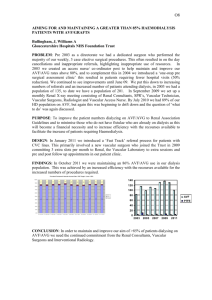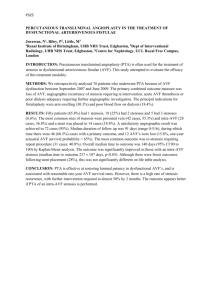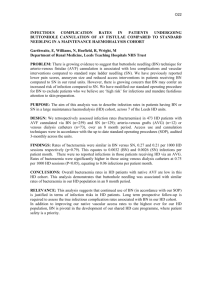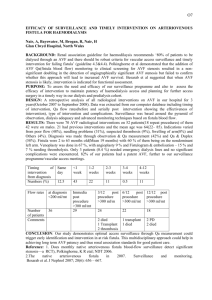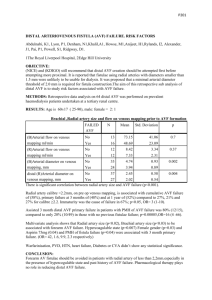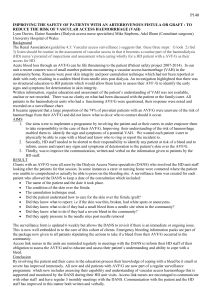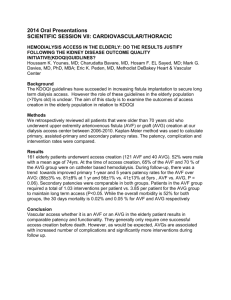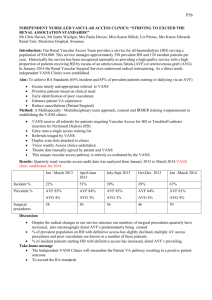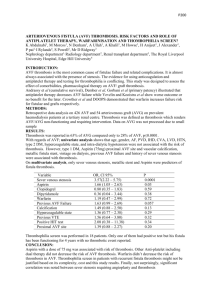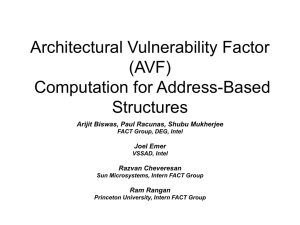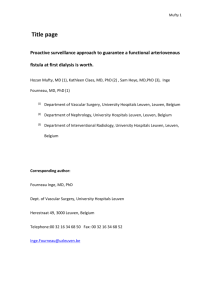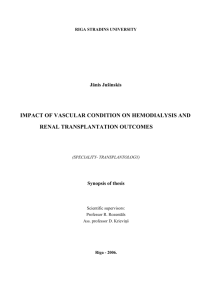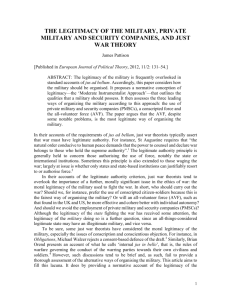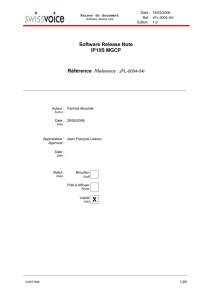Introduction of a Renal Dialysis Arteriovenous Fistula Care
advertisement
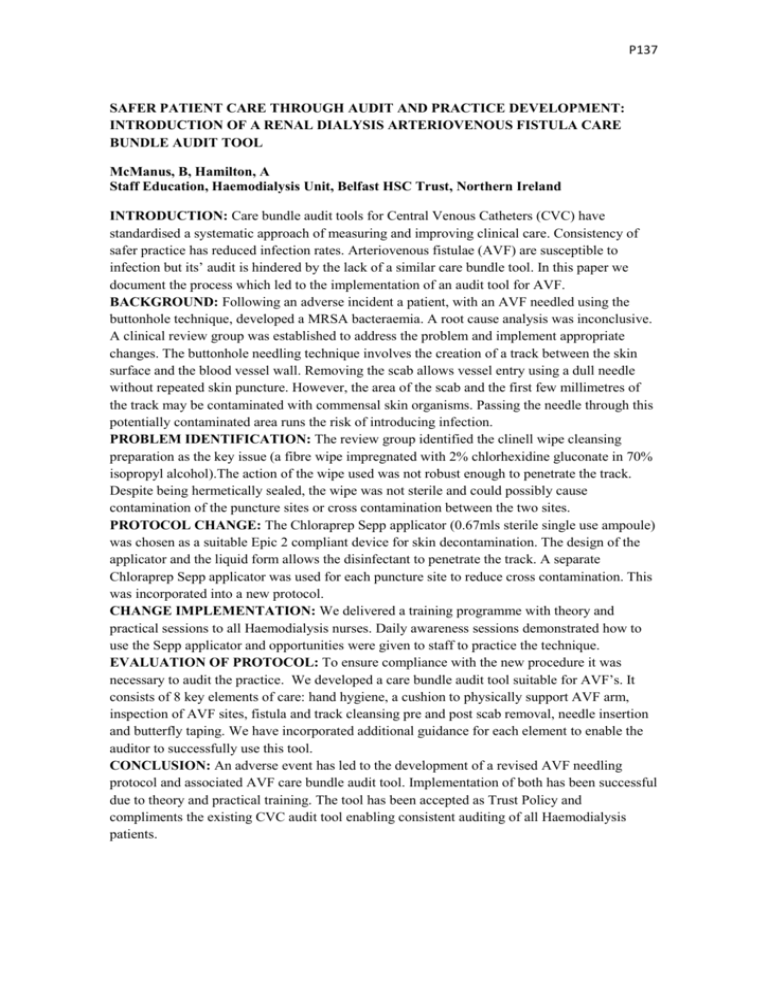
P137 SAFER PATIENT CARE THROUGH AUDIT AND PRACTICE DEVELOPMENT: INTRODUCTION OF A RENAL DIALYSIS ARTERIOVENOUS FISTULA CARE BUNDLE AUDIT TOOL McManus, B, Hamilton, A Staff Education, Haemodialysis Unit, Belfast HSC Trust, Northern Ireland INTRODUCTION: Care bundle audit tools for Central Venous Catheters (CVC) have standardised a systematic approach of measuring and improving clinical care. Consistency of safer practice has reduced infection rates. Arteriovenous fistulae (AVF) are susceptible to infection but its’ audit is hindered by the lack of a similar care bundle tool. In this paper we document the process which led to the implementation of an audit tool for AVF. BACKGROUND: Following an adverse incident a patient, with an AVF needled using the buttonhole technique, developed a MRSA bacteraemia. A root cause analysis was inconclusive. A clinical review group was established to address the problem and implement appropriate changes. The buttonhole needling technique involves the creation of a track between the skin surface and the blood vessel wall. Removing the scab allows vessel entry using a dull needle without repeated skin puncture. However, the area of the scab and the first few millimetres of the track may be contaminated with commensal skin organisms. Passing the needle through this potentially contaminated area runs the risk of introducing infection. PROBLEM IDENTIFICATION: The review group identified the clinell wipe cleansing preparation as the key issue (a fibre wipe impregnated with 2% chlorhexidine gluconate in 70% isopropyl alcohol).The action of the wipe used was not robust enough to penetrate the track. Despite being hermetically sealed, the wipe was not sterile and could possibly cause contamination of the puncture sites or cross contamination between the two sites. PROTOCOL CHANGE: The Chloraprep Sepp applicator (0.67mls sterile single use ampoule) was chosen as a suitable Epic 2 compliant device for skin decontamination. The design of the applicator and the liquid form allows the disinfectant to penetrate the track. A separate Chloraprep Sepp applicator was used for each puncture site to reduce cross contamination. This was incorporated into a new protocol. CHANGE IMPLEMENTATION: We delivered a training programme with theory and practical sessions to all Haemodialysis nurses. Daily awareness sessions demonstrated how to use the Sepp applicator and opportunities were given to staff to practice the technique. EVALUATION OF PROTOCOL: To ensure compliance with the new procedure it was necessary to audit the practice. We developed a care bundle audit tool suitable for AVF’s. It consists of 8 key elements of care: hand hygiene, a cushion to physically support AVF arm, inspection of AVF sites, fistula and track cleansing pre and post scab removal, needle insertion and butterfly taping. We have incorporated additional guidance for each element to enable the auditor to successfully use this tool. CONCLUSION: An adverse event has led to the development of a revised AVF needling protocol and associated AVF care bundle audit tool. Implementation of both has been successful due to theory and practical training. The tool has been accepted as Trust Policy and compliments the existing CVC audit tool enabling consistent auditing of all Haemodialysis patients.
